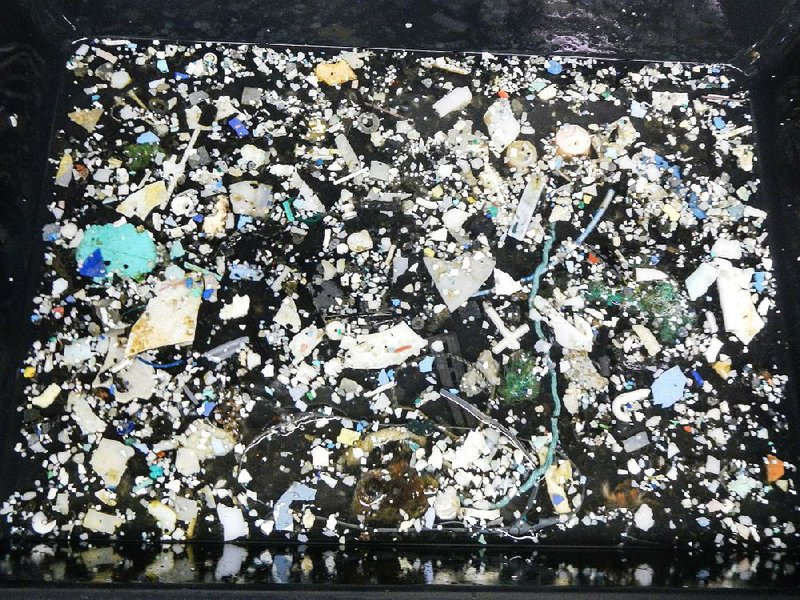Seventy-nine thousand tons of plastic debris, in the form of 1.8 trillion pieces, now occupy an area three times the size of France in the Pacific Ocean between California and Hawaii, a scientific team reported Thursday.
The amount of plastic found in this area, known as the Great Pacific Garbage Patch, is "increasing exponentially," according to the surveyors, who used two planes and 18 boats to assess the ocean pollution.
"We wanted to have a clear, precise picture of what the patch looked like," said Laurent Lebreton, the lead oceanographer for the Ocean Cleanup Foundation and the lead author of the study.
The garbage patch has been described before. But this new survey estimates that the mass of plastic contained there is four to 16 times larger than previously supposed, and it is continuing to accumulate because of ocean currents and littering humans both onshore and offshore.
The "patch" is not an island or a single mass, leading some scientists to object to the name, which the current study uses. Instead, it's a large area with high volumes of plastics, one in which concentrations increase markedly as an observer moves toward its center. The debris ranges from tiny flecks to enormous discarded fishing nets, which make up 46 percent of the material, the study found.
The study was led by the Ocean Cleanup Foundation and researchers at institutions in New Zealand, the United States, Britain, France, Germany and Denmark who published the findings in the journal Scientific Reports.
There's a key distinction between the mass of plastic within the patch increasing -- which it is -- and the overall size of the patch, which does not seem to be changing. Rather, it's just that trash within the patch seems to be accumulating, or growing more dense.
The plastic is probably mostly rolling in from Pacific countries, Lebreton said. But it could be from anywhere since plastic now travels across the entirety of the ocean and has even shown up in Arctic waters, where very few humans live. That suggests the plastic traveled there from elsewhere, riding the ocean currents.
Some of the debris probably also is from the 2011 tsunami that devastated Japan and washed large amounts of waste back out to sea, the study said.
The location of the patch is in a zone of slack currents where debris arrives and then lingers, increasing in the calm waters.
The study finds that, based on examinations dating back to the 1970s, the amount of plastic in the patch is steadily growing as more flows in than flows out -- saying that plastic levels are "increasing exponentially."
"We think there's more and more plastic basically accumulating in this area," Lebreton said.
The most striking aspect of the findings -- and perhaps the most damaging -- was the large volume of fishing nets or "ghost nets," said Chelsea Rochman, an assistant professor at the University of Toronto who studies marine plastic but was not part of the current study.
"This suggests we might be underestimating how much fishing debris is floating in the oceans," she said in an email. "Entanglement and smothering from nets is one of the most detrimental observed effects we see in nature."
A Section on 03/23/2018
